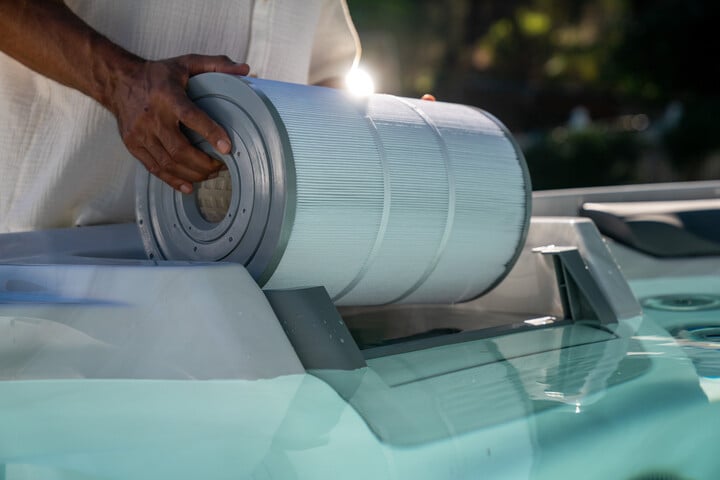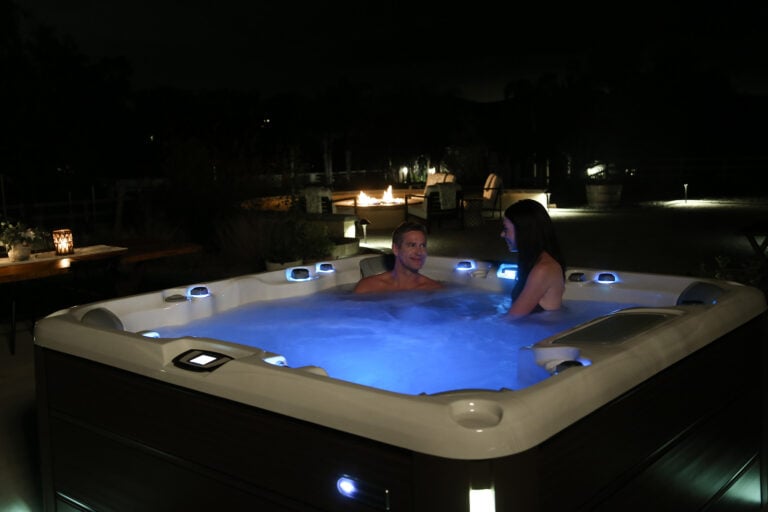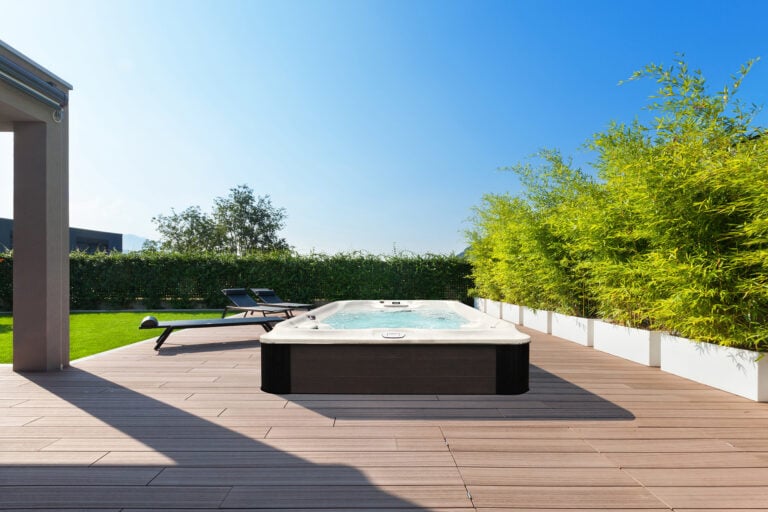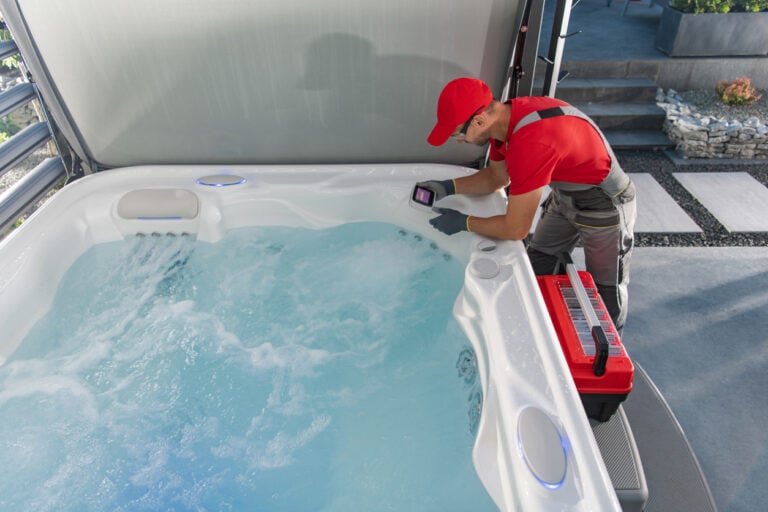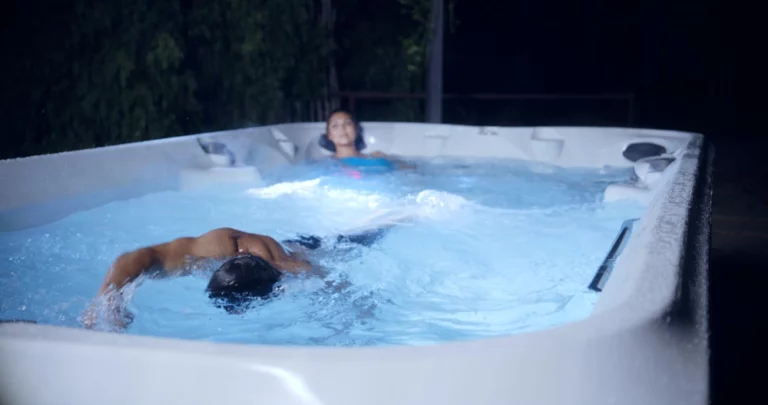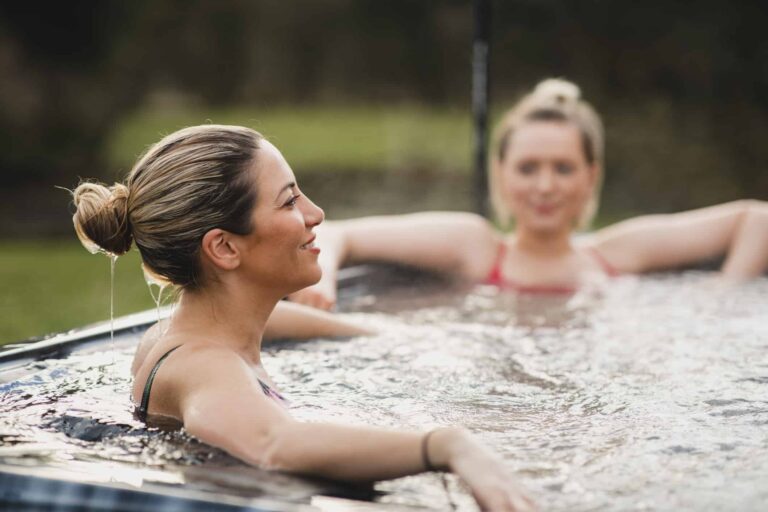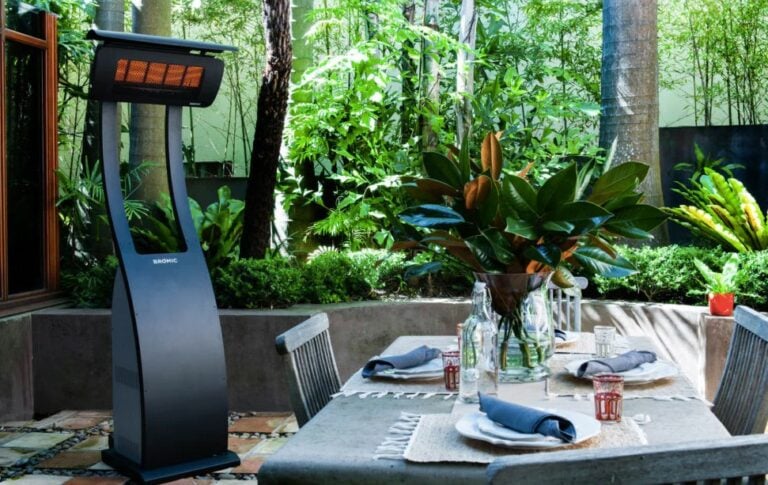Hot Tub Parts 101 – Guide to Maintaining & Repairing Your Spa
Picture this: You’ve just gotten home after a long day at work and your body is aching, so you head step into your backyard, onto the patio, and sink into the warm embrace of your hot tub.
We can’t think of a better way to end the evening than that.
Every time you enjoy your spa, you have a plethora of hot tub parts to thank for the soothing experience.
The various elements of your spa are designed to work seamlessly together to provide a luxurious experience, but a malfunctioning or damaged part can quickly put your soaking plans on hold.
Whether you’ve just lifted your cover and discovered a perplexing issue and need to quickly diagnose the root cause, or you’re a first-time owner who wants to be prepared for any future issues, you’ve come to the right place.
In this article, we’ll be exploring the five hot tub parts that play the most important role in your experience, diving into their purpose and the common issues you may face if they start malfunctioning.
In the end, we’ll even provide you with a quick list of tips to help maximize the longevity of your hot tub parts, keeping them running smoothly for years to come.
Read on to become the master of your spa!
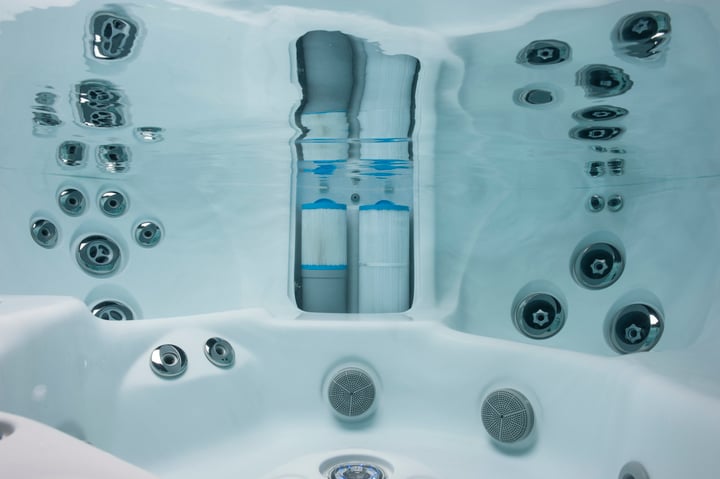
Hot Tub Parts – The Basics
While hot tub parts come in many forms, five play the most significant role in your spa’s basic functioning: the filter(s), heater, pump, jets, and control system.
In this section, we’ll explore how each of these parts works and share some of the most common issues they face.
1. Filter(s)
Your hot tub filter is often an overlooked hero when it comes to your water quality.
As water circulates through your hot tub, your filters trap small debris in their pleats, ensuring contaminants don’t get back into the tub.
Without your filter, you’d often find yourself soaking in water with floaties, which is not only unsightly but would also increase the risk of water quality issues, like algae blooms.
Furthermore, with every drop of water in your spa regularly cycling through your filters, they play a key role in your spa’s overall efficiency.
The most common issue with hot tub filters is debris overaccumulation, which clogs the pleats and reduces their basic functioning.
This can result in a host of issues, including water quality problems, weak water flow, and decreased energy efficiency.
2. Heating Element
With its name alone, it’s clear what role your heating element plays in your spa’s functioning; it maintains the temperature of your water.
As water moves through your circulation system, it surrounds the heating element, ensuring your water can easily stay at the set temperature.
Unfortunately, due to this constant exposure to your water, your heating element is susceptible to damage, such as scale buildup or corrosion, if water is frequently left improperly balanced.
This can result in heater failure, leaving you with icy cold water until you can have it replaced.
3. Pump
When it comes to keeping water moving through your system, your pump is to thank.
Your water pump is the heart of your circulation system. It pushes water through the pipes, over the heater, and back into the tub as strong currents rush through the jets to massage weary muscles.
Without your pump, you’d be sitting in a bath filled with stagnant water–no, thank you!
One of the most common issues with pumps directly affects your spa’s water levels.
If you’ve let your levels drop below the recommended range, your pump is unable to get enough water, which interrupts its base functioning.
You’ll quickly notice if this is happening because your pump will begin making a loud growling noise, signalling that you need to top up your spa’s water.
4. Jets
Next up is the hot tub part that stands out in most people’s minds–the jets!
Hot tub jets come in a wide range of shapes, sizes, and styles, providing that oh-so-soothing pressure you’ve come to know and love.
However, much like so many other elements of your hot tub, your jets are constantly surrounded by water, which influences their long-term health.
Like your heater, your jets can suffer corrosion or scale buildup if your water isn’t properly balanced. This can reduce their effectiveness, interrupting your regularly scheduled spa time.
5. Control Panel
Finally, let’s turn our focus to the brain of your spa: the control panel!
This panel is your spa’s number one way of communicating with you, ensuring you are well aware of how well it’s working.
Control panels look different in every spa, but they provide valuable information and contain powerful settings that help optimize your spa’s functioning, from setting the temperature to managing filtration schedules.
However, there’s bound to come a time when you head out to your spa and discover an error code blinking on your panel, signalling an issue that needs your attention.
These error codes should not be ignored, and luckily, your user manual will ensure you can easily decode these messages and gain insight on recommended next steps.
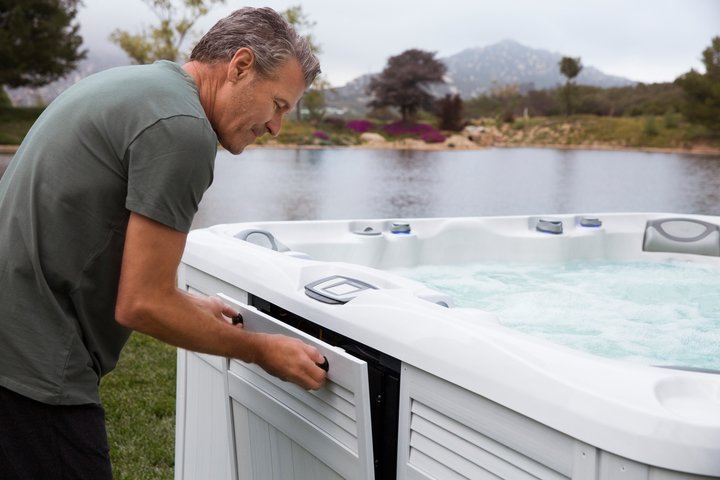
Troubleshooting Common Hot Tub Issues
Now that we’ve covered these five key hot tub parts, let’s examine the various warning signs that they’re in distress and how you can respond to their cries for help.
Cold Water
There’s nothing worse than expecting to settle into the warmth of your spa, only to discover icy cold water!
While your mind might automatically jump to heater issues (and you could be right), that’s just one of the things that may be causing your spa’s frigid state.
Common Culprits:
- Malfunctioning switches
- Clogged filters
- Damage to your heating element
Solution:
When it comes to diagnosing the root cause of any problem, it’s always best to start with the easiest possible cause to troubleshoot and work your way down.
For cold water, the first thing you should do is check your control panel for any error codes that may explain the issue, such as “FLO” codes or “SN” codes.
If your control panel isn’t flashing any warning signs, you’ll want to check the state of your filters. Clogged filters restrict the flow of water, which can result in water temperatures dropping.
If your filters look dirty, remove them from your spa and give them a good clean, using a spray-on rinse-off filter cleaner, allowing them to soak for 15 minutes before thoroughly rinsing them off and returning them to your spa.
If you’ve cleaned your filters and given your spa some time to run and your water temperature still remains low, you have two options:
- Call in the professionals to diagnose and service your hot tub.
- Drain your spa completely and inspect your heating element for corrosion or scale.
If you’ve discovered scale buildup on your element, you can attempt to clean it, however, if it’s corroded, you’ll need to invest in a new heater.
Remember, improperly balanced water is the number one cause of heater failure, so ensuring proper water chemistry is key.
Weak Water Pressure
If you’ve hopped into your spa and turned on the jets only to discover a weak current, you’re likely not going to stay in the water long.
Water pressure plays a key role in your spa experience, not only providing that powerful hydromassage you’ve been craving but also dispersing treatment products and filtering out debris.
If your water pressure has suddenly dropped, you’ll want to diagnose the cause right away.
Common Culprits:
- Clogged filters
- Pump issues
- Debris buildup in your circulation system or around your jets
Solution:
Once again, filters play a big role here, and may be the cause of the sudden change in water pressure. To troubleshoot, check your filters and clean them if necessary.
If you’ve cleaned your filters but your jets still aren’t performing as expected, follow these steps:
- Check the control panel for error codes.
- Turn on your waterfall to see if it’s also not functioning properly.
- Top up your spa to ensure your pump is getting enough water.
- Feel the opening of your jets, looking for any scale buildup.
If you discovered scale on or around your jets, it’s likely scale is in your circulation system and could use a clean.
To clean your pipes, add a line cleaner to the water and run your jets for 15 minutes.
If you’re still unable to diagnose and troubleshoot the issue, contact your local hot tub service team.
Error Codes
As we mentioned above, error codes deserve your utmost attention and communicate key information about your spa’s functioning.
While codes may vary based on manufacturer, here are some of the most common ones you may see and their general meanings:
- HOT: Your water temperature has risen above your desired level.
- COOL: Your water temperature has dropped below your set temperature.
- ICE: Water temperature has dropped significantly, and the system has identified a potential freezing condition.
- SN-1 or SN-2: There’s an issue with your temperature sensor.
- FLO-1, FLO-2, or FLO-3: There is an issue with a flow switch
Solution:
No matter the error code, the only response is to check your user manual. Your manual will outline what the code means, and provide the next steps.
A Loud Pump
If you’ve noticed your pump has begun making strange sounds, there are two things that may be happening, and each one can be identified by the type of sound you’re hearing.
Common Culprits:
- It’s not getting enough water, resulting in a “growling” sound.
- The bearings are too dry, resulting in a “squealing” sound.
Solution:
If your pump is growling, check the water levels in your spa and top them up as needed. Remember to test and treat your water anytime you add fresh water.
If your pump is squealing, however, you’ll need to lubricate the bearings, allowing them to move against one another more easily.
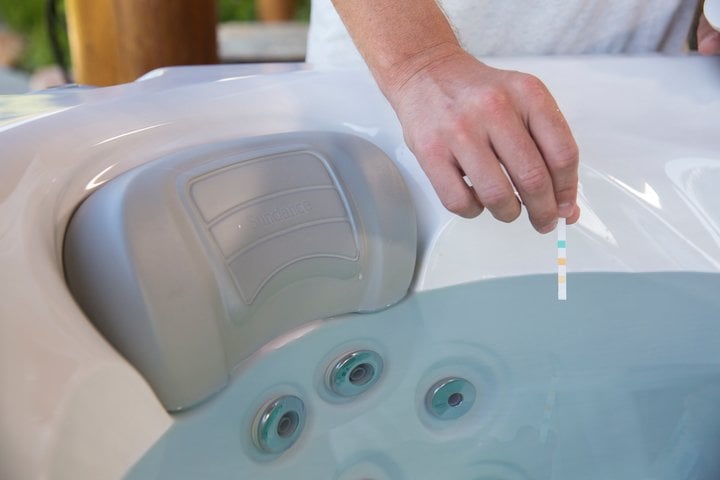
Tips To Maintain The Quality of Your Hot Tub Parts
Curious how you can reduce the risk of hot tub issues? Ultimately, the quality of your spa all comes down to one thing…you!
The steps you take to care for your spa play a pivotal role in its function and longevity.
Here are some tips to help keep your spa running smoothly:
- Prioritize filter care: It’s clear that your filters significantly affect your spa’s performance. To keep them in good condition and functioning properly, rinse them weekly, and deep clean them monthly.
- Maintain water balance: The quality of your water is key and can be your spa’s downfall if not properly balanced. Test your water at least twice a week, ensuring your pH remains between 7.2 and 7.5 and your alkalinity stays between 80 and 120 ppm.
- Drain and deep clean your spa seasonally: No matter how meticulously you maintain your water, it’s crucial to change it every few months, ensuring you’re always soaking in the cleanest water possible. Drain and deep clean your hot tub every 3-4 months, or more frequently if it sees heavy use.
- Use a line cleaner: During your seasonal drain, add some line cleaner to the tub before draining, giving it 15 minutes to run through your system and remove any built-up grime lingering in those unseen areas of your spa.
With these simple steps, you can keep your spa running its best, while reducing the risk of costly repairs down the line.
Replacement Hot Tub Parts and Spa Service in Vancouver
Are you in need of an experienced, reliable hot tub service team who can step in and help diagnose and troubleshoot issues with your spa?
Look no further than the friendly team of professionals at Crystalview Pool, Spa & Patio!
With nearly 40 years of industry experience, our team has been making hot tub ownership effortless for Vancouver residents for decades.
Trust us to restore your spa to its former glory. Contact us today or shop our convenient online store to restock all your hot tub care basics.

